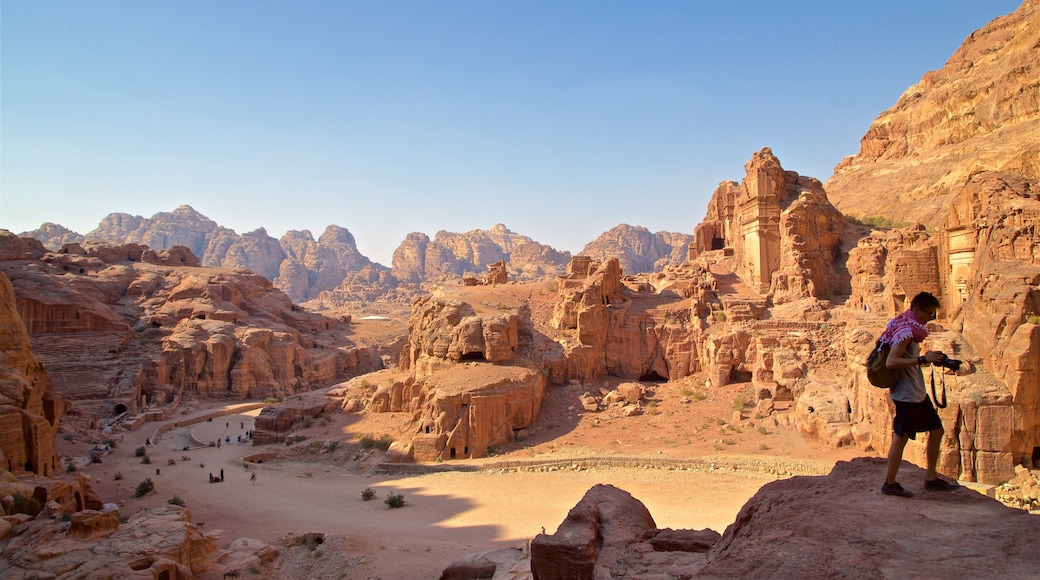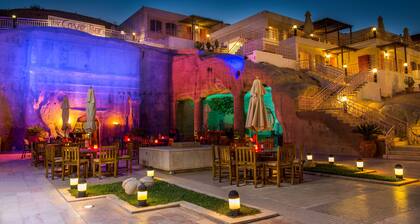Petra is the mysterious long-lost capital of the Nabatean Kingdom, once a major trading hub in the Middle East. Impressive for its tombs, churches and theaters carved out of its steep canyon walls, the archeological site obtained UNESCO World Heritage status in 1985.
With many details lost in the mists of time, it is now commonly assumed that Petra dates from around 4th century B.C. Appreciate its mysterious appeal as you wander through the narrow, natural passageway named “The Siq.” This ancient entrance is a long chasm in the rock that opens up to reveal The Treasury, the most famous of all the sights in Petra. The overall effect is like a curtain being lifted for a spectacular show, especially during the Petra By Night tour with candles.
Take your time to study the details of The Treasury, carved out of the solid sandstone canyon wall. Standing 128 feet (39 meters) high and 83 feet (25 meters) wide, this rock face building is nothing less than impressive, especially since it is over 2,000 years old.
As the canyon widens, the sight of the Nabatean tombs in the Street of Façades is another marvel. Soon, the curved expanse of The Theaterappears. Imagine the labor involved in creating this vast amphitheater, designed to hold 4,000 people.
As you progress through the canyon, more and more amazing structures appear. Royal tombs display weathered, detailed ornaments and The Great Temple hugs the hillside. Towards the end, there is one more ancient masterpiece carved out of a conical mountain peak: The Monastery. After climbing the huge stone staircase, enjoy the magnificent views.
Petra is next to the town of Wadi Musa. The archeological complex is open daily and entry fees apply. The on-site Petra Visitor Center has an informative museum, included in the ticket price. Guided tours, horse-and-carriage trips and donkey or camel rides cost extra.











